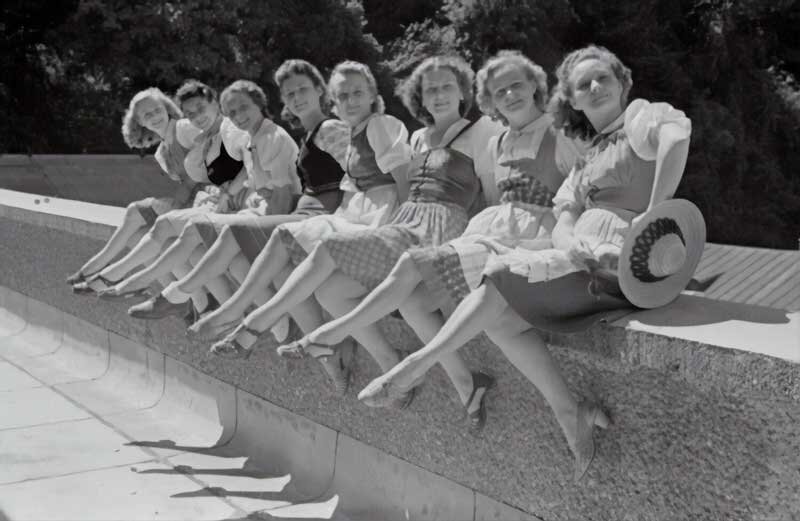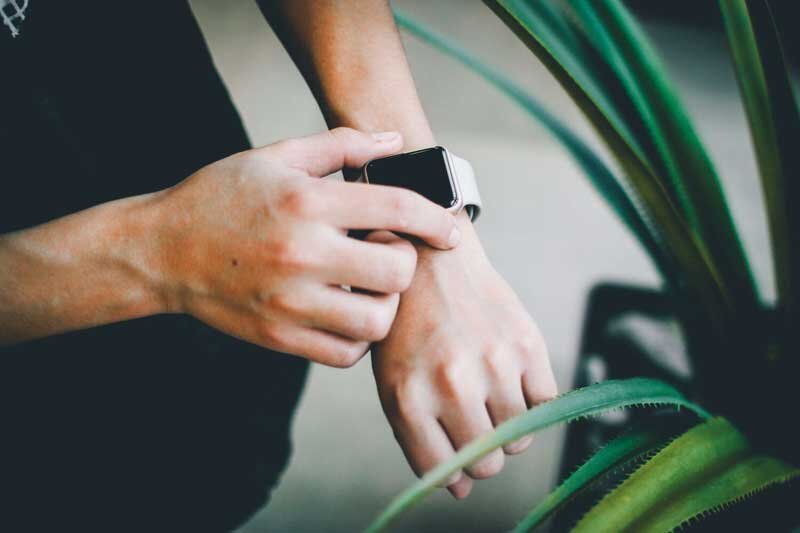Fashion, it’s said, either starts in the higher echelons of society, to percolate through to the high street, or it’s created on the streets where it inspires designers who adopt and adapt it until it becomes desired and accepted by the customers of high end brands. From what we wear to work, through our sports clothes to our weddings, our love of fashion is a constant thread running through our lives. It gives us an opportunity to say something about ourselves, to make a statement and, most importantly of all, to have some fun. Having fun on holiday has always been a great time to show off our style. We take a look back through the holiday snaps to see just how we’ve dressed when we’ve been beside the sea.
UK holidays - a fashion rooted from the 18th & 19th century
Ask anyone of a certain age what they remember most, and not necessarily most fondly, about holiday attire and the chances are they will say ‘knitted swimwear’. Soaked and sagging woollen swimmies have scarred entire generations. There are people who still shudder at the memory of the weight of those trunks when wet, and at the amazingly abrasive powers of sand if it was allowed to cling to them. It’s difficult to choose a precise date to start the story of holiday fashion. It can be argued that the ‘seaside resort’ is an 18th century concept, developed for those who saw the health benefits of sunshine, spas and sea water. There’s no doubt though that the Victorian era was a tipping point. The railways had made the seaside more accessible for many more people. With more leisure time at their disposal the Victorians wasted no time in heading for the coast. It wasn’t about a sun tan. For ladies, parasols were the order of the day to shade the skin and protect the fashionably pale complexion.Not that they hid themselves away. For the Victorians the Prom - or Promenade was the place. It was a catwalk. For ladies this meant big hats, big frocks and, in the 1880s, big bustles. The gentlemen were just as eager to show off. Although some lighter weight, and paler coloured, fabrics were available for summer wear, the holiday look for both genders was almost exactly the same as for the city.
Victorian modesty on a UK seaside holiday
There were two social phenomena that complicated all of this finery. Firstly, the well cut clothes for the promenade sat easily with Victorian modesty, but the new craze for bathing in the sea required garments that could be rather more revealing. At the same time, cheaper fares and bargain prices for bed and breakfast accommodation meant that (heaven forbid!) clerks and shop girls could visit the seaside; and when they did, they bought clothes that certainly looked like those of the well off, even if close scrutiny revealed that they lacked something in quality. Meanwhile the issue of modesty and mixed sex swimming was dealt with by reverting to the, by now, tried and tested bathing machine. Those using these wheeled huts to lower themselves into the sea soon adopted the legendary bathing costumes of the late Victorian and early Edwardian period. The striped body, sleeved and half legged one piece costume would not survive for many years but it’s instantly recognised in postcards, photographs and comedy sketches even today.
From war to the bikini
There was a short period when the swim suits for ladies became even more modest, adopting a ‘sailor suit’ look, featuring a skirt over ‘knickerbockers’. But soon, with the First World War over, it was the 1920’s and that decade brought a major change. In the USA the Jantzen company, originally the Portland Knitting Company, introduced an elasticated, one piece, skin tight costume for ladies. In one move they launched a famous ‘diving girl’ logo, propelled a world wide swim wear craze, and gave the world what some have called the garment that ‘did more for the emancipation of the female body that any other item of outerwear clothing’. Oh - and they also changed the language - they renamed the ‘bathing suit’ as a ‘swimsuit’. At this time it was very fashionable for girls to wear these new and decidedly skimpy swimsuits with, rolled down, black stockings. It was a look inspired by the films of Mack Sennet and his ‘Bathing Beauties’. The problem was it really only worked as a look. It became too much trouble to fiddle around with your stockings whenever you wanted to paddle. The style did not last long.
Fast forward through the 1930’s and it’s a holiday wear world of ‘Breton shirts’ and ‘beach pajamas’ (which some say were invented by Coco Chanel, although there is no evidence to support that). Oddly, for women, trousers were still unacceptable at home and work whilst absolutely the right thing at the beach. Men in the meantime had not altered their style that much. A straw boater here, a striped blazer there, was about as much as the male summer wardrobe had allowed. The Second World War brought summer holidays to an end for a while. When peace arrived in 1945 the world was ready for a change. They say that there’s no such thing as new idea, and it’s certainly true of the next big thing (or should that be little thing?) in swimwear. There are ancient paintings, dating back to 5600 BC, that show ladies in two-piece swimsuits. They may well have inspired French designer Jacques Heim to introduce a two-piece costume in his 1946 collection. It wasn’t exactly revealing and it didn’t make much impact.
However, just a few weeks later, in the July, another French designer Louis Reard launched his two piece. It was seen as seriously revealing and skimpy. The real sensation was that it showed the navel. No catwalk model would wear it, so he hired the nude dancer Micheline Bernardini to model it. It might seem an odd choice now, but Read chose to name the swimsuit after the beach where, just days before, they had carried out the first public test of a nuclear bomb; but importantly the swimsuit had a name. It was called The Bikini. The rest, as they say, is history. Brigitte Bardot wore it. It got smaller and smaller. It changed shape. By the time Ursula Andress wore one it had become a part of life.
What to wear when visiting your UK holiday home in the 1950’s?
Meanwhile, back on British beaches, holiday attire was not always as glamorous. The 1950’s made family holidays a reality for many, but whilst the younger ones latched on to rock and roll, and all the bright colours and, largely American influenced, styles that went with it, their parents and grandparents had only their normal clothes to take to the seaside. Many a family album will reveal holiday snaps featuring children and teenagers in Tee shirts and shorts, whilst grandad is stretched out in a deck chair wearing a three piece suit, socks, shoes and a flat cap. He might just have removed his tie in a nod to the occasion. Suddenly it was the 60’s. Fashion now moved at a previously unimagined pace. In the high streets and dance halls style mattered more than ever. It spilled over into holidays. And this time the men were in step. Shorts and T shirts, lightweight fabrics and, amazingly, colours. In a heartbeat the 1970’s arrived and now, influenced by a deluge of media exposure ranging from clothing brand advertising to Bond movies, holiday clothing really took off. Shirts matched swimming trunks, hippie influenced ‘tie-dye’ fabrics became mainstream and big floppy sun hats were absolutely the thing for the hippest of ladies on the beach.
Wear what you want, wear tech - at your holiday home destination
By now the great boom in holiday camps had started to give way to the freedom of self catering holidays. A glance at any photo album of the time will show that at the mass sit down meals of a holiday camp most ladies were in dresses and many men still wore a jacket and tie. In your own seaside holiday cottage and in a fast changing world you could do what you want. You could wear what you want. As we’ve rushed into the twenty first century our approach to how we dress has moved ever more to the casual. The necktie has all but disappeared for men, even at work. For the big occasions (ask any bride and certainly any mother of the bride) a smart appearance is still vital. But, when it comes to holidays we’re more relaxed then ever. Which is not to say we’re lazy. An increasing awareness of our physical fitness has brought about a ‘sports casual’ look, closely allied to wearable technology (if you’re going to run you want to know how far) and it’s proved ideal for holidays.
Perhaps we will realise we don’t need as many clothes as we thought at our seaside holiday cottage….
Even as our fashions and holidays have adapted through financial ups and downs, and two world wars, we never imagined the current pandemic as something we would have to deal with. Locked down and grounded we have probably never dressed so casually for so long in all our lives. As we emerge from our present situation and think again about holidays there will be a huge interest in having a break in a UK seaside holiday cottage. You will probably by then have identified and refined your own, personal, casual style. You may well have decided that you don’t need as many clothes as you once thought. Life will change now. We know that. The need to spend time with family and friends, to chill and chat, has become more valuable. Take the opportunity and you can really relax. Because there’s no dress code now….







